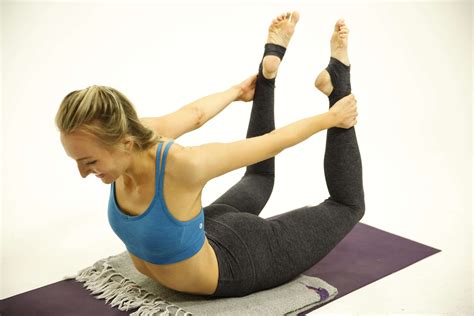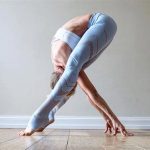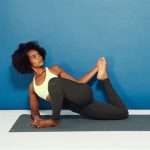Yoga Mastery: Achieve True Flexibility with These 5 Essential Poses
Flexibility is a core component of yoga practice, promoting not just physical well-being, but also mental resilience and balance. While numerous yoga poses can improve flexibility, certain key positions are renowned for their powerful impact on the body’s range of motion. This guide will take you through five essential yoga poses that are vital for achieving true flexibility, regardless of whether you’re a beginner or an advanced practitioner. With thorough descriptions, practical applications, and expert insights, this article aims to provide a comprehensive understanding of how these poses can transform your practice and enhance overall body function.
Key Concepts: Why Flexibility is Important in Yoga
Flexibility in yoga isn’t just about being able to touch your toes or contort into pretzel-like shapes; it’s about freeing the body from tension and restriction. By improving flexibility, you can alleviate stress, increase circulation, and reduce the risk of injury. Yoga poses stretch the muscles, tendons, and ligaments, which helps in releasing stored tension and improving mobility. The following five poses are specifically designed to help you achieve that:
1. Downward Dog (Adho Mukha Svanasana)
This iconic yoga pose is essential for improving hamstring and calf flexibility, while also strengthening the arms and shoulders.
- Benefits: Increases flexibility in the posterior chain (back of the body), strengthens the upper body, and stretches the spine.
- Tips for Mastery: Focus on engaging your core and pressing your heels toward the floor for a deeper stretch.
- Common Mistakes: Overarching the lower back or placing too much pressure on the wrists.
2. Standing Forward Bend (Uttanasana)
Uttanasana is a powerful pose for lengthening the hamstrings, decompressing the spine, and calming the nervous system.
- Benefits: Stretches the hamstrings, calves, and hips while relieving tension in the back and neck.
- Tips for Mastery: Keep a slight bend in the knees if your hamstrings are tight, and focus on drawing your chest toward your thighs.
- Common Mistakes: Rounding the upper back excessively or locking the knees.
3. Bridge Pose (Setu Bandhasana)
Bridge Pose is ideal for opening the chest, shoulders, and hip flexors, all while strengthening the back and glutes.
- Benefits: Improves flexibility in the front of the body, strengthens the back, and stretches the spine and hip flexors.
- Tips for Mastery: Engage the glutes and press through the heels to lift the hips while keeping the knees aligned over the ankles.
- Common Mistakes: Flaring the ribs or allowing the knees to splay outward.
4. Pigeon Pose (Eka Pada Rajakapotasana)
Pigeon Pose is a deep hip opener that targets the glutes, hip flexors, and groin, releasing tension and enhancing mobility in the hips.
- Benefits: Opens the hips, stretches the glutes and hip flexors, and helps in releasing emotional tension stored in the body.
- Tips for Mastery: Keep the hips squared to the front of the mat and use props like a block or blanket under the front thigh if needed.
- Common Mistakes: Twisting the pelvis or collapsing the chest forward.
5. Seated Forward Bend (Paschimottanasana)
Paschimottanasana is one of the most effective poses for improving flexibility in the back and hamstrings while also promoting relaxation.
- Benefits: Lengthens the spine, stretches the hamstrings and lower back, and calms the mind.
- Tips for Mastery: Lead with the chest as you fold forward, keeping the spine long and the feet flexed.
- Common Mistakes: Rounding the back or overstretching the hamstrings.
Historical Context: Yoga and Flexibility
The roots of yoga date back over 5,000 years in India, where it was developed as a spiritual, mental, and physical discipline. Flexibility has always been a core aspect of yoga practice, particularly in Hatha Yoga, which focuses on physical postures (asanas) to prepare the body for meditation. Early yogis believed that flexible muscles and joints allowed for better energy flow (prana) throughout the body, supporting both physical health and spiritual enlightenment.
Current State Analysis: Yoga and Modern Flexibility Practices
In contemporary yoga practice, flexibility is often the main focus for many practitioners, particularly those looking to enhance athletic performance, reduce stress, or manage chronic pain. Modern yoga has integrated scientific principles of biomechanics, encouraging safe and effective stretching techniques. Classes often incorporate dynamic and passive stretching to target different muscle groups, with a focus on balance, mobility, and injury prevention. Flexibility has become a key indicator of physical health, especially as sedentary lifestyles cause tight muscles and limited range of motion.
Practical Applications: How to Incorporate These Poses Into Your Routine
Incorporating these five poses into your yoga routine can lead to significant improvements in flexibility over time. Here’s how you can use them effectively:
- Warm-up: Start with gentle dynamic stretches to warm up the muscles before moving into static holds.
- Duration: Hold each pose for at least 30 seconds to a minute, gradually increasing the duration as your flexibility improves.
- Frequency: Practice these poses at least three times a week to see noticeable changes in flexibility.
- Progression: As your flexibility improves, you can deepen the stretch by adjusting your body position or adding props like blocks or straps.
Case Studies: Flexibility Success Stories
| Case Study | Background | Poses Used | Results |
|---|---|---|---|
| Case 1: John – Marathon Runner | John experienced tight hamstrings and lower back pain due to long-distance running. | Downward Dog, Seated Forward Bend | Improved hamstring flexibility, reduced pain, and enhanced running performance. |
| Case 2: Sarah – Office Worker | Sarah had limited mobility in her shoulders and hips due to prolonged sitting at a desk. | Bridge Pose, Pigeon Pose | Increased hip mobility, improved posture, and reduced stiffness. |
| Case 3: Mike – Bodybuilder | Mike struggled with shoulder tightness and limited flexibility in the upper body. | Bridge Pose, Downward Dog | Enhanced shoulder flexibility and balance, which improved his lifting technique. |
Stakeholder Analysis: Who Benefits from Flexibility in Yoga?
Flexibility in yoga can benefit various groups, including:
- Athletes: Enhanced flexibility reduces the risk of injury and improves overall performance in sports.
- Seniors: Increased range of motion helps maintain mobility and independence as we age.
- Office Workers: Flexibility exercises counteract the negative effects of prolonged sitting and poor posture.
- Meditation Practitioners: Flexible joints and muscles allow for longer, more comfortable meditation sessions.
Implementation Guidelines: Building Flexibility Safely
- Start Slowly: Avoid pushing yourself into deep stretches before your muscles are warmed up.
- Use Props: Blocks, straps, and blankets can support your body and help you achieve proper alignment.
- Consistency is Key: Regular practice will yield the best results, but it’s important to be patient with your body.
- Focus on Alignment: Proper form is crucial for avoiding injury and maximizing the benefits of each pose.
Ethical Considerations: The Dangers of Overstretching
While yoga is generally safe, overemphasizing flexibility can lead to injury, particularly in hypermobile individuals. Ethical yoga teaching should emphasize balance, strength, and control over extreme flexibility. It’s important to listen to your body and avoid pushing beyond your limits. Overstretching can cause ligament damage, joint instability, and chronic pain.
Limitations and Future Research
Though flexibility is a key component of physical health, it should not be the sole focus of yoga practice. Strength, balance, and mindfulness are equally important for long-term well-being. More research is needed to understand how flexibility training impacts different populations, including older adults and those recovering from injury. Future studies could explore the relationship between flexibility and mental health, as well as the long-term effects of yoga on joint health.
Expert Commentary
Experts in yoga and physical therapy agree that improving flexibility through yoga poses can significantly enhance overall health. “Flexibility is not just about physical range of motion; it’s about increasing the body’s capacity to move freely and efficiently,” says Dr. Jane Peterson, a leading yoga therapist. “But it’s crucial to practice mindfully, with attention to alignment and balance.”








